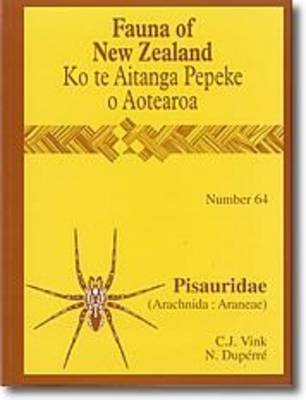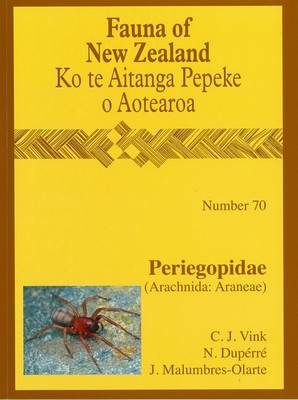Fauna of New Zealand
2 primary works • 3 total works
Book 64
Four closely related species of Pisauridae (nurseryweb spiders) are found in New Zealand; three on the mainland and one on the Chatham Islands. All species are endemic to New Zealand and are likely to be related to Australian species. The most common species is Dolomedes minor, found throughout New Zealand in scrubland, grassland, swamps and marshes. Dolomedes aquaticus is found in open riverbeds and stony lakeshores throughout the South Island and in the southern half of the North Island. A new species of Dolomedes is found in shaded riverbeds throughout the mainland. The Chatham Island species, Dolomedes schauinslandi, is nationally endangered due to its restricted range. In this Fauna the genus Dolomedes and all New Zealand species are described, with information on synonymy, type data, material examined, and geographical distribution. Habitus images of adults, illustrations of important structural features, and distribution maps are provided. A key to adults is given. A molecular phylogenetic analysis examining the relationships of New Zealand species in the genus is presented.
Book 70
There are only three species known in the family Periegopidae and all are in one genus, Periegops. These rare spiders have only ever been found in relict forests at limited locations in New Zealand (Banks Peninsula, Riccarton Bush, the Aldermen Islands, and East Cape) and in Queensland, Australia. Periegopids are only found in forest with a deep leaf litter layer and well-drained soil. They do not build a web, but hunt on the forest floor. Periegopids can be most readily distinguished from other spiders found in New Zealand by having six eyes arranged in three widely spaced diads. Two species of Periegopidae, both in the genus Periegops Simon 1893, are found in New Zealand; P. suterii (Urquhart, 1892) and a newly described species. In this new Fauna of New Zealand contribution the genus and both species are described or redescribed, with information on synonymy, type data, material examined, and geographical distribution. Habitus images of adults, illustrations of important morphological features, and distribution maps are provided, and a key is given. A molecular phylogenetic analysis examining the relationships between eight specimens of P. suterii and three specimens of the new species using COI data is presented.


